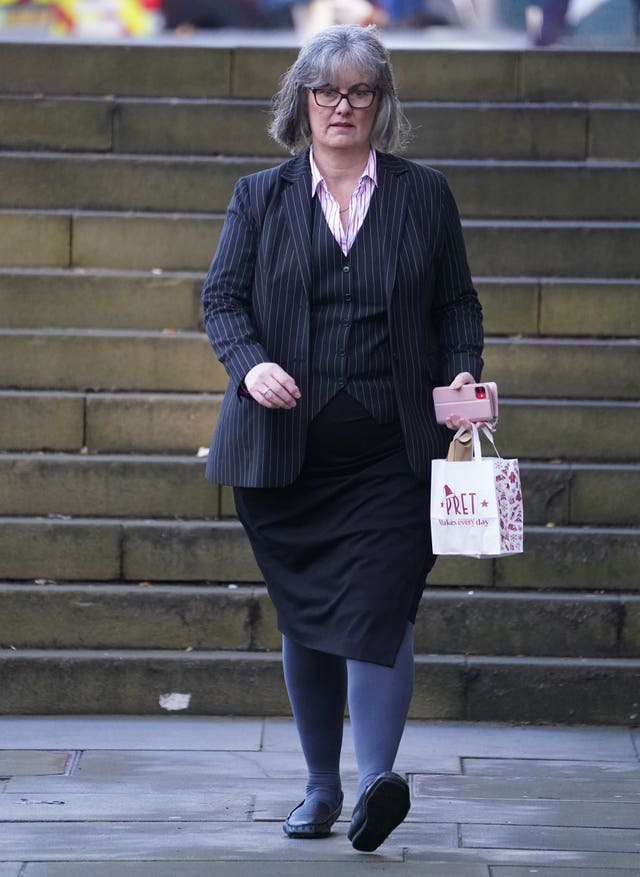The preservation of life and immediate first aid response should take priority over other welfare checks when a suspect is restrained, an inquiry has heard.
Joanne Caffrey, an expert witness on the use of force and police custody, told the Sheku Bayoh inquiry in Edinburgh on Thursday that under the European custody standard, detainees must receive treatment comparable to a member of the public.
Father-of-two Mr Bayoh died after he was detained by police officers in Kirkcaldy, Fife, on May 3, 2015.
The inquiry previously heard Mr Bayoh, who was 31 at the time of his death, had been struck over the head with a baton, sprayed with CS and Pava spray and was restrained by up to six officers on the ground using handcuffs and fast straps.
Ms Caffrey told the inquiry on Thursday: “If, as a police officer, you came across a member of the public who’s just collapsed and become unresponsive, they would instantly get an ambulance called for them, and what the European custody standards say is that the same principles should apply to anyone within the UK held at the hands of the state.
During evidence from the officers who had been at the scene, the inquiry heard they failed to get blankets and did not remove restraints from Mr Bayoh when he fell unconscious.

Ms Caffrey said that as soon as those risk factors had been mentioned, the subject had to go to hospital.
Senior counsel to the inquiry, Angela Grahame KC, asked Ms Caffrey what police were supposed to do with handcuffs upon realising the subject was unconscious.
She replied: “Remove them.
“If you’ve already established that the person is unresponsive, the purpose of the restraints is to prevent persons escaping or assaulting.
“But if you’ve done your checks right and completed, they’re unresponsive, then there’s no necessity to keep the physical restraint more because medical attention must be prioritised over the restraint process.”
Ms Caffrey was then asked about what officers might do regarding a blanket.

She told the inquiry: “The preservation of life and the immediate first aid response will take priority over the other welfare aspects.
“If you’ve got sufficient staff, then as well as staff dealing with the preservation of life and the first aid monitoring, then just basic things like a jacket or a blanket over the lower part of the body, or the upper…
“Just basic things like that and, if nothing else, for public perception as well to show that the care and welfare is there in relation to the casualty.
“You’re trying to keep the casualty from losing body heat because the loss of body heat, if the heart is not pumping correctly, the body is going to start cooling anyway.
“So then if the body is exposed to the elements, that’s going to increase the cooling as well. So trying to keep the casualty with some warmth isn’t going to harm them.”
Ms Caffrey also said CS and Pava spray made subjects “agitated and more aggressive” and could also cause breathing difficulties as well as serious burns.
She also believed officers should have been able to see by Mr Bayoh’s reactions that a serious medical emergency was taking place and officers should have called for an ambulance as soon as possible.
Ms Caffrey’s evidence to the inquiry, before Lord Bracadale, continued on Thursday afternoon.
She was asked by Ms Grahame if she had any comments about the duration of the events that took place in the lead-up to the death of Mr Bayoh.
“My initial feelings when looking at how many uses of force were used in that period of time were that was a lot of use of force in that period of time.
“It just seemed to be a lot in a small period of time,” she said.
She was asked about time limits on officers building a rapport with subjects.
“There’s no time limit at all,” Ms Caffrey added.
Ms Caffrey also said that a person’s race should not be factored into a risk assessment when dealing with a subject.
Ms Grahame asked Ms Caffrey about any training that would assist officers to minimise factoring in racial stereotypes into their risk assessments.
“Not specifically,” Ms Caffrey said. “There was no one national standard. So you would find differences between each force.”
Ms Caffrey will continue to give evidence to the inquiry on Friday morning.




Comments: Our rules
We want our comments to be a lively and valuable part of our community - a place where readers can debate and engage with the most important local issues. The ability to comment on our stories is a privilege, not a right, however, and that privilege may be withdrawn if it is abused or misused.
Please report any comments that break our rules.
Read the rules here